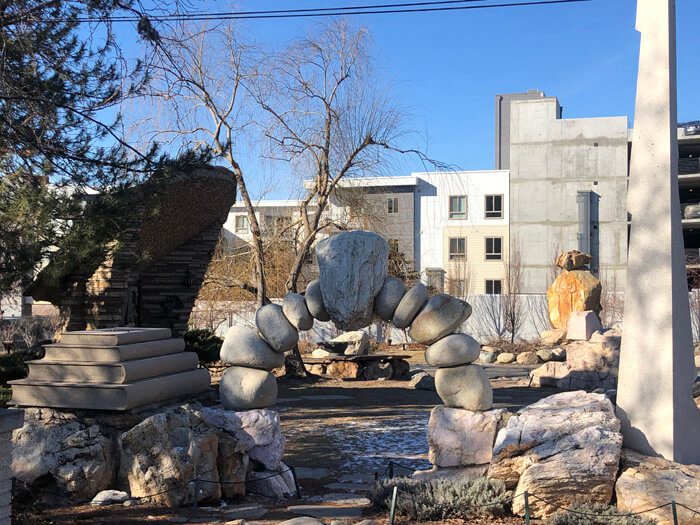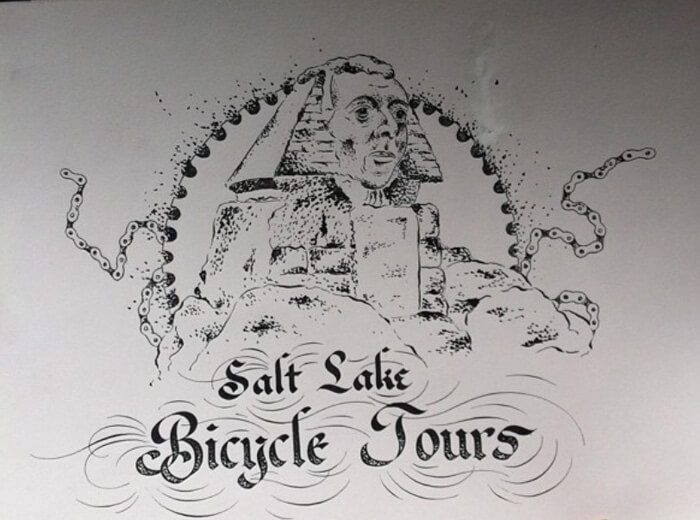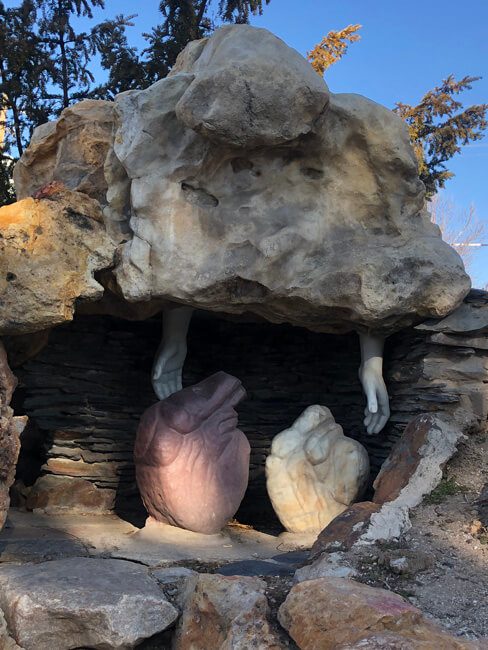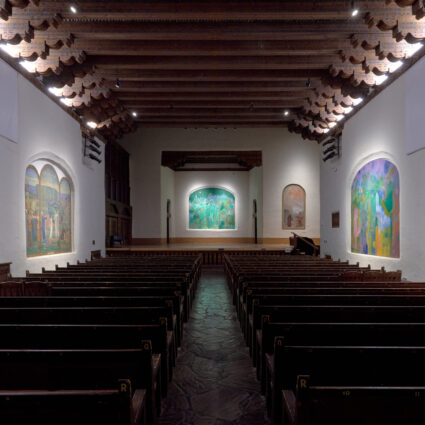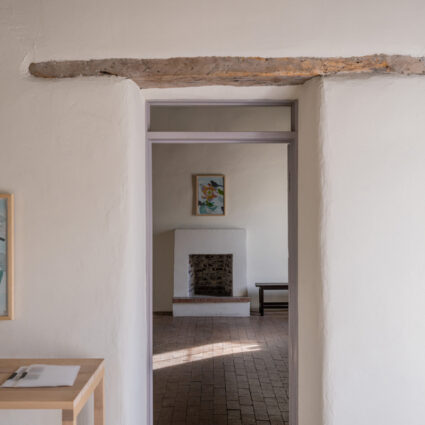Gilgal Garden, set in an inconspicuous section of Salt Lake City, is Utah’s most unusual homage to the Church of Jesus Christ of Latter-Day Saints.
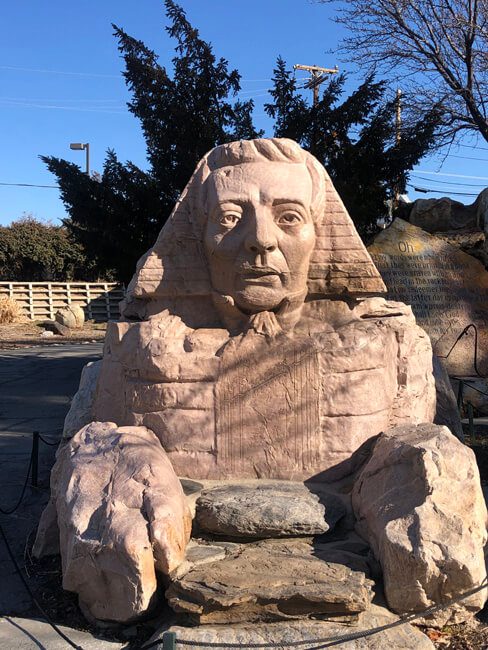
SALT LAKE CITY, UT—Nestled between two houses on a residential street in the heart of downtown Salt Lake City is a most unusual sculpture garden. Known as the Gilgal Garden, this modest yet elaborately crafted site features twelve sculptures and seventy decorative stones among scenic botanical arrangements.
The brainchild of masonry worker Thomas Battersby Child, the garden is a lively tribute to the exuberant faith of its creator. Gilgal takes its name from a site of significance in both the Old Testament and the Book of Mormon, the flagship text of Utah’s predominant religious faith, the Church of Jesus Christ of Latter-Day Saints (LDS), also popularly known as Mormonism. According to the Old Testament fable, Gilgal, meaning “circle of sacred stones,” was the place God intervened to allow the Israelites safe passage over the river Jordan, near Jericho.
Since its creation, the site has amassed a cult following of sorts, with native Utahns possessing an eternal curiosity and sentimental relationship to the garden and its many oddities—most famously a large stone sculpture of LDS church founder Joseph Smith as a sphinx. The occasional non-local can consider a visit a notch on the proverbial belt of little-known national peculiarities. The site is also a common stop for city-wide bike tours, plein air painting classes, an annual Easter egg hunt, and general teenage rebellion.
Visiting on a cold winter’s day, one misses the lovely botanical collection that renders the site a peaceful reprieve in the spring and summer months. The garden is surrounded by a parking garage and a newly constructed apartment complex to its north—indicative of the direction the city and much of America are heading—the identical metropolitan mold of urban sprawl slowly snuffing out a city’s distinctive character.
Once in the central enclosure, the garden’s visual curiosities abound. In addition to the infamous Joseph Smith sphinx, the garden features a large unpolished rock with a low relief carving of a headless standing figure holding a mighty sword (the captain instrumental to the Israelites’ victory in Jericho), a stone slab symbolizing a sacrificial altar, and a cave-like cutout that reveals hidden sculptures inside—disembodied hands encircling two human hearts. This work references a verse from the biblical Book of Malachi, which testifies to the power of eternal families, according to an onsite didactic pamphlet.
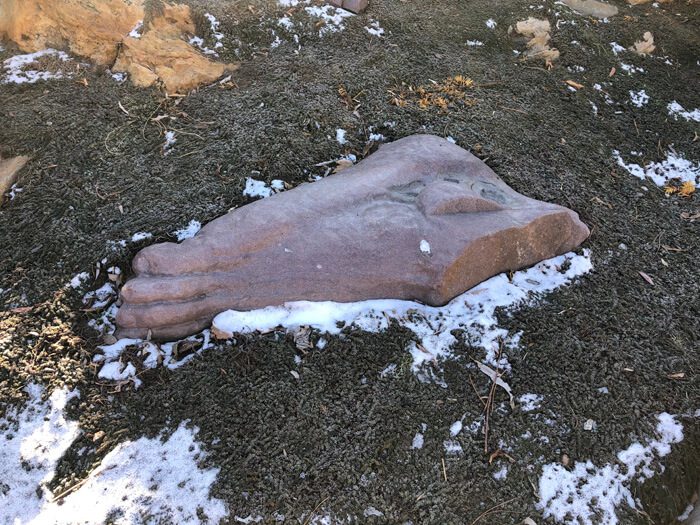
Elsewhere, a circular rock arch frames an eastern portion of the garden beside a large stack of stone books and a garden plow, all sections of a four-part homage to LDS scripture. Across the Smith sphinx is a sculptural self-portrait of Child, depicted in a standing pose with different shades and textures delineating the figure’s head, chest, and pants (which are crafted to look like bricks). The figure is placed in an elaborate stage-like enclosure with various masonry tools surrounding him, a nod to the craft that enabled his beloved Gilgal.
The garden also features an enormous birdhouse, which is more accurately a bird hotel. Sculpted eagles line a neighboring wall and symbolize Child’s American patriotism. Nearby, a sculpture of Child’s wife Bertha is placed within a rock wall. Encircling the garden, one sees disembodied limbs including feet, a torso, and a man’s head, nestled within a garden mound. According to Child, the inspiration for this piece is the biblical epic of King Nebuchadnezzar’s dream, whereby the destruction of a giant is accomplished by “a stone cut out of the mountain without hands, which becomes a great mountain and fills the whole earth.” Surrounding all the sculptures are various decorative stones inscribed with text.
While the LDS faith is deeply entrenched in the mythos of the Salt Lake Valley, evidenced by the monumental temple from which the city’s grid radiates outward—not to mention the many public sculptures and historical markers devoted to the pioneers whose epic migration laid claim to the desert city—it’s doubtful that Gilgal Garden is among the markers on any LDS history tour. Instead, the site employs a word-of-mouth recognition, perhaps attributable to the eccentric nature of its folk art. Adding to its lore is the fact that without a purposeful trip to the site, it would be easy to miss. The location, oddly situated between residential and commercial structures, was once Child’s backyard.
Child, who died in 1963, began his unique vision for an immersive sculpture garden in 1945. After falling into relative disrepair, the group Friends of Gilgal Garden was organized in 1997 to ensure adequate maintenance of the site, and with the help of municipal and private funding, purchased the site in 2000. That same year, the garden officially opened to the public.
Judi Short, president of the Friends of Gilgal Garden, emphasized this pivotal moment in the late 1990s when developers wanted to demolish the garden to build apartments.
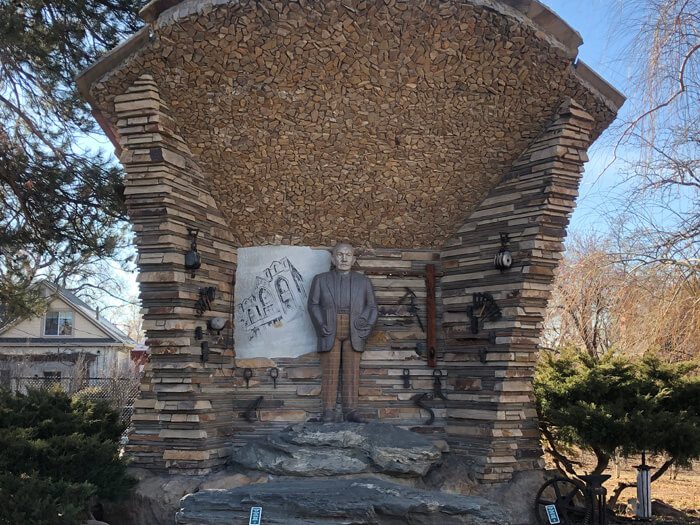
“At this point, the community really came together to save it,” she tells Southwest Contemporary in a recent phone interview.
Short became involved as a volunteer for the Salt Lake Master Gardener group after her retirement in 2008. The program required members to undergo coursework and forty hours of community service, which included botanical preservation of Gilgal. Although the Salt Lake Master Gardener group is no longer active, the FGG was formed as a 501(c)(3) to preserve the site. The group is currently working on changing the Garden’s name to “Gilgal Sculpture Garden,” as well as procuring a conservation easement to ensure the site is protected in the event the city decides to sell it.
“There’s nothing like it in the entire country. It’s very different and unique, a piece of outsider art,” Short says.
From the time of its inception until his death, Child was reportedly consumed by the garden, hunting down the enormous rocks vital to carrying out his vision, constructing an elaborate workshop in his backyard for cutting the rocks, and instructing sculptor Maurice Brooks to craft the garden’s signature sculptures.
He famously embraced the fact that others may not fully understand his vision, stating, “You may think I am a nut, but I hope I have aroused your thinking and curiosity.”
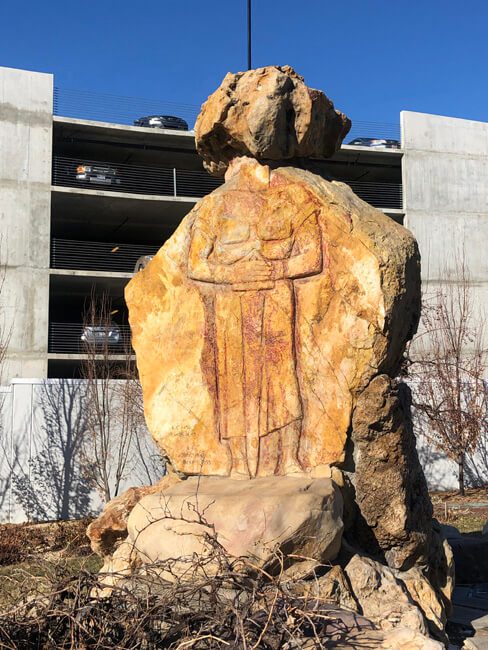
As a native Utahn, I have visited the site a handful of times, always eager to show out-of-town friends this odd, yet unforgettable attraction. It’s not exactly a given that locals know of its existence, as I discovered in my informal polling of friends, family, and social media contacts in preparation for this story.
My mother had never heard of it, while many associated the garden with its signature sculpture—“oh yeah, the Joseph Smith sphinx, so weird!!” Others had fascinating insights, ranging from admiration to confusion.
“It’s a batshit passion project of personal religious fervor channeled toward sculpture, masonry, stonework, turned public park,” said one friend. “As a non-Utahn, I’m on the one hand aghast [at] a city government’s involvement [in a] religious pet project, on the other hand, it is a triumph of folk art.”
“So bonkers. Patriarchal cult art. Oddly charming. I don’t like it at all, but I also sorta like it… how is that possible!?” said another.
Another friend admits, “Back in my teenage punk-rock years, before it was a public park, it was a popular spot to break into at night and drink stolen booze.”
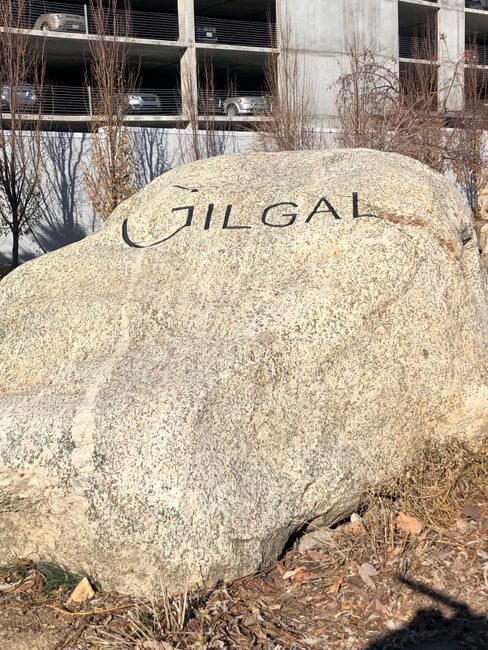
Yet another, who chose the site for his 2016 nuptials, said, “Visiting alone sends shivers of serendipity to be calmed.”
Last summer, I took a group of friends from New York City, among them a descendant of Parley Pratt, a notable figure within early LDS history who is credited with greatly expanding the reach of the faith in its formative years.
Prior to his first visit to Utah, Pratt’s descendent discovered the existence of a statue of his ancestor, located in a busy intersection in east Salt Lake City. After discovering that the statue of his namesake suffered a tragic fate the year before his visit—it was demolished by a semi truck, never to be replaced—the Gilgal Garden became a consolation, a site of ancestral significance in the region Brigham Young would emphatically declare was the place. Still, an undeniable fascination with the site, as well as the LDS faith that inspired it, is common to those who ascribe to a variety of religious beliefs. The author’s own ancestry includes relatives who fought the mob who murdered Joseph Smith at Carthage jail and others who undertook the arduous journey westward with Brigham Young.
For past and future visitors to this most curious of sites, Gilgal at once tells a singularly LDS story, while existing as an exuberantly sentimental passion project anyone can admire.
Gilgal Gardens, 749 East 500 South, Salt Lake City, is open seven days a week from 9 am to 5 pm October through March and 8 am to 8 pm April through September; it’s closed on New Year’s Day, Thanksgiving, and Christmas.
Note: On August 16, 2018, the Church of Jesus Christ of Latter-Day Saints released updated guidance on how to identify their organization, indicating a preference to be referred to by the full name of the organization, rather than by the term “Mormon” or LDS Church.” Their style guide can be found online.

